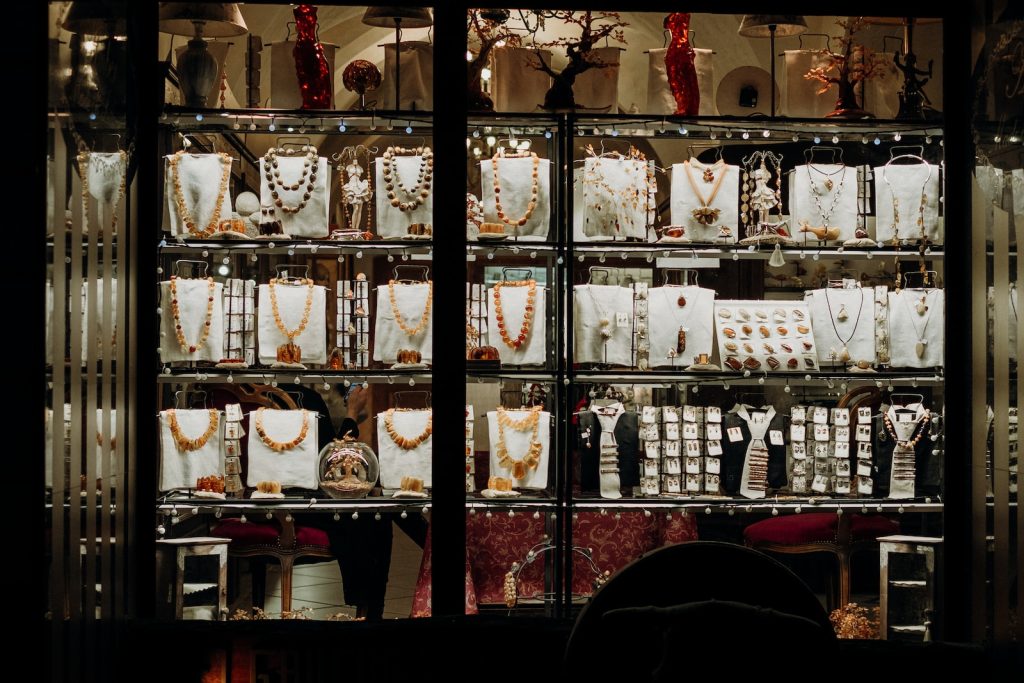Starting a customized jewelry and accessories store business is an exciting endeavor that allows you to combine creativity, craftsmanship, and entrepreneurship. This comprehensive guide will walk you through the steps to successfully launch and manage your own customized jewelry and accessories store, from conceptualizing your business idea to setting up shop and attracting customers.

1. Introduction:
A customized jewelry and accessories store business involves creating unique and personalized pieces that reflect the style and preferences of your customers. This could range from customized necklaces and bracelets to personalized handbags and scarves. The key to success in this business is to offer high-quality products that resonate with your target audience and provide exceptional customer service.
2. Market Research and Idea Development:
Conduct thorough market research to identify your target market, competitors, and trends in the customized jewelry and accessories industry. Identify gaps in the market that your business can fill, and determine what sets your products apart from existing offerings. Consider factors such as demographics, preferences, and purchasing behavior of your potential customers.
3. Business Planning and Strategy:
Create a detailed business plan that outlines your business goals, target market, competitive analysis, product offerings, pricing strategy, marketing plan, and financial projections. Your business plan serves as a roadmap for your business’s growth and helps you secure funding from investors or lenders if needed.
4. Legal and Financial Considerations:
Choose a suitable business structure (sole proprietorship, partnership, LLC, etc.) and register your business with the appropriate government authorities. Obtain any necessary licenses or permits to operate your store. Set up a business bank account and establish an accounting system to keep track of expenses, sales, and taxes.
5. Product Design and Sourcing:
Design a diverse range of jewelry and accessories that cater to different tastes and styles. Consider offering customization options such as engraving, color choices, and personalized messages. Source high-quality materials from reputable suppliers to ensure the durability and aesthetics of your products.
6. Craftsmanship and Manufacturing:
Depending on your skills and resources, you can choose to create the jewelry and accessories yourself or partner with skilled artisans. If you’re producing the items in-house, invest in the necessary tools and equipment. If outsourcing production, establish clear quality control measures to maintain consistency in your products.
7. Branding and Marketing:
Develop a strong brand identity that reflects the essence of your customized jewelry and accessories store. Create a compelling logo, tagline, and visual elements that resonate with your target audience. Develop a marketing strategy that includes social media marketing, influencer collaborations, content creation, and participation in local events and craft fairs.
8. Setting Up Your Store:
Choose a physical location for your store that receives sufficient foot traffic and aligns with your target market. Design an appealing and functional store layout that showcases your products effectively. Invest in attractive displays, lighting, and signage that reflect the aesthetics of your brand.
9. Online Presence and E-commerce:
In today’s digital age, having an online presence is essential. Create a professional website that showcases your products, provides information about customization options, and allows customers to place orders online. Invest in high-quality product photography and user-friendly navigation. Consider integrating an e-commerce platform for online sales.
10. Customer Engagement and Service:
Offer exceptional customer service to build trust and loyalty. Engage with your customers both in-store and online, addressing their inquiries and concerns promptly. Provide a seamless shopping experience by offering various payment options, easy returns, and efficient order fulfillment.
11. Scaling and Growth:
As your customized jewelry and accessories store gains traction, explore opportunities for growth. Consider expanding your product range, opening additional store locations, or partnering with other retailers. Continuously innovate and stay updated with industry trends to remain competitive in the market.
Conclusion:
Starting a customized jewelry and accessories store business requires careful planning, creativity, and a deep understanding of your target audience. By offering unique and personalized products, delivering exceptional customer experiences, and effectively marketing your brand, you can build a successful and rewarding venture in the dynamic world of customized fashion accessories. Remember that success takes time, dedication, and a commitment to continuous improvement.
